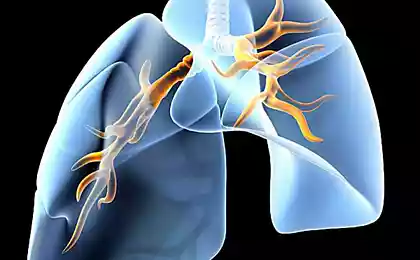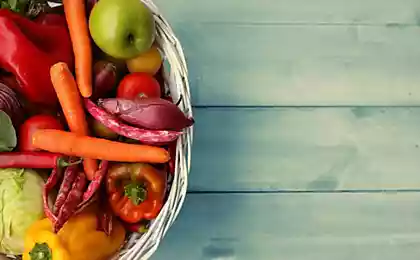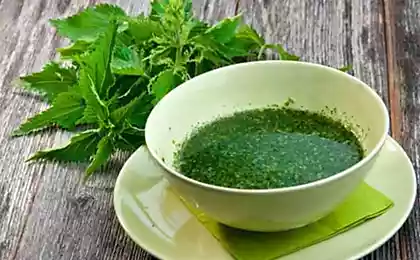566
Diet therapy in Chinese: when food is the cure
Fifty seven million seven hundred twenty two thousand one hundred fifty
One of the most unique and fundamental topics of traditional Chinese medicine is dietary therapy. According to her views, of the disease, depending on severity, up to 60-90% are treated with drugs, the rest should be treated appropriate diet. But what this ancient knowledge can be useful for us today?
On questions of "Medical letters" answers the candidate. med. D., author of books and articles on Chinese medicine, doctor of traditional Chinese medicine S. V. Zaitsev.
— Sergey Vladimirovich, we usually perceive the diet recommended in this disease, as the prohibition eating your favorite food as a deprivation rather than treatment. What's a diet in the understanding of Chinese medicine?
Proper nutrition in Chinese medicine is not a restriction, deprivation of joy to eat. There is no food that is harmful is absolutely always and for all. A long time in China allowed to eat everything that grows, runs, flies, crawls and swims. Any product that can be detrimental to some people, but to be an indispensable medicine for others, may bring health damage in a single time period, but strengthened in another. The medication should be used only in severe cases when one diet is not effective enough.
Making a diet for this person, the doctor considers the age, gender, body type, health status, diseases, living conditions, climate, season etc. as the changes of these factors change and advice on nutrition. Besides the recommended products are not entire diet as a whole, but only its main part.
— How proper nutrition can prevent and treat disease?
— This is because the products possess inherent properties. In Chinese traditional medicine all the difference and variety of product properties were summarized and categorized, and these properties are sometimes very far from European performances. The Chinese concept of diet includes the theory of Yin and Yang, the notion of five solid and six hollow organs, the theory of energy channels and collaterals, certain principles of treatment. And product properties describe characteristics such as "character", "taste", "joining channel", "replacement and decrease", "up and down, swimming on the surface and dive to the bottom."
— What, for example, "nature"? How does he look?
"Nature" can neither be seen nor touched, although it is "cool", "cool", "warm" and "hot". In Chinese medicine it is called "four character", or "four power".
Products that provide relief for diseases of heat, called cold and cool. For example, watermelon (used when heat, thirst, redness of urine), persimmon (it is used for dry mouth, sores in the mouth), and celery (with vertigo caused by looking up Yang of the liver) belong to the category of cold and cool products.
Hot and warm are considered to be products that bring relief in diseases of cold. So, fresh ginger is used for colds caused by wind and cold, heat and fever, mucous discharge from the nose. Dry ginger and black tea are used for pain in the stomach (when pressing on the affected area brings relief), nausea and vomiting. Pepper and the wine is recommended with chilliness and cold extremities, pain in the joints because of the impact of wind and dampness.
There is also "neutral" foods — they can eat patients with diseases such as cold, heat, and just to maintain health. This, for example, rice, soy beans, radish, apples, cow's milk.
— But "taste" — something too exotic?
— The concept of "taste" closer to the European understanding. Chinese medicine divides foods with flavouring properties into five types: sour (including astringent), bitter, sweet, spicy, salty. Each product has one flavor or combination of flavors. It is important here that different in taste products have different healing properties.
In particular, the sour taste (hawthorn, dogwood, pomegranate, persimmon, etc.) reduces sweating, relieves shortness of breath, stops diarrhea.
Bitter (citrus peel, kernels of bitter almonds, etc.) clears heat and fire, dries damp, lowers the energy, cleanses the poison.
Sweet taste (honey, malt sugar, flour products, etc.) has a complementary effect, soothes pain and spasms.
Spicy taste produces a scattering effect, driven by energy, quickens the blood. This is mainly spices: ginger, onion and garlic pepper-red, black, sweet, etc.
The salty taste poslabljaet, softens and dissipates swelling, replenishes Yin and blood. They have salt and seafood: seaweed, shrimp, crabs, etc. One of the most important properties of the product is its "joining channel". These channels (called meridians) form an invisible network which circulates internal energy qi of the person. "Joining the channel" means that the products act selectively: on certain organs and their corresponding channels. For example, apricot seed to treat coughing and dyspnea, so enter the lung channel. Chrysanthemum flowers to treat redness of the eye and, accordingly, are included in the channel of the liver. Cinnamon calms the spirit and is thus the heart channel.
Some products are in multiple channels, that is, have a broad effect on various organs and systems. Sometimes entry into the channel is very important. For example, pear, sugarcane and banana — all of it cold and sweet foods. But they are different channels, so pears are used when heat in the lung, the sugar cane in the heat of the stomach, and bananas when the heat in the large intestine.
— What does "up and down"?
— On the basis of differences in character, taste and other properties of the products are divided into two large groups: the "rising and floating on the surface" and "descending and sinking to the bottom."
The first group includes light, fragrant products, which have a direction upwards and outwards. This, for example, herbs — they have a dissipative, conductive, revealing the hole effect. Peppermint purifies and cures the common cold, and chrysanthemum and green tea enlighten the head and eyes, so used for headaches and redness of the eyes.
But the heavy, rich taste of the products belong to the second group. For example, the watermelon — it clears heat, stops wheezing, stops coughing, increases urination.
But the products are characterized by the principle of "fill — subtract".
— What do we need to fill?
-Sometimes we see that the patient expressed a lack of one or more of the life of the body began. This may be the deficiency of energy, deficiency of blood, deficiency of Yang (the sun, active, masculine) or Yin (lunar, passive, feminine). In this case it is necessary to use products of the group, which makes up for missing the vital principle.
So, when the emptiness of the energy of the spleen there is a weakness, fatigue, loss of appetite, bloating, diarrhea. And when the emptiness of the energy of light we observe shortness of breath, weak breath, quiet voice, sweating. To treat these conditions are recommended glutinous rice, millet, peanuts, chestnuts, beef, chicken, carp, eel.
The syndrome of emptiness of blood (pallor of the face, lips, nails, palpitations and interruptions in the heart, dizziness and darkening of the eyes, blurred vision, flashing flies before the eyes, disturbances of the menstrual cycle) you can assign products to compensate for blood: carrots, grapes, animal liver, spinach.
Yin recharge, in particular, sesame seeds, soybeans and tofu, wheat, pine nuts, pork, cow's milk, rabbit meat, honey, eggs, sugar. And to fill Jan recommend walnuts, lamb, shrimp, chestnuts, pineapple, cherry, pepper.
— Why do we need "Bates" purged?
— They are dirty, harmful, toxic energy from the body and contribute to its purification. "Bates" foods have diuretic, laxative, antipyretic, etc. action. In the most successful combination of "cleansing" properties is presented in foods such as green beans, kidney beans, celery, garlic, hawthorn, watermelon, green tea. When we have a goal of cleansing the body, their use is preferred. Chinese doctors have always believed that intemperance in food is one of the most important causes of diseases. Not too overeat: when we eat, we should eat only 80%. But to endure, until hunger hurts belly too bad.
Breakfast is better but it's easy. Make a hearty lunch to replenish the energy of the body (easy to saturate). But the dinner can not eat too much and immediately go to bed: congestion and overflow in the stomach leading to gastrointestinal diseases.
The food we eat should be warm but not hot, and the dishes used in cold — not icy, but cool. This is especially true of children, the elderly, and patients with gastrointestinal diseases. After a meal it is recommended to like. Chinese wisdom says: "If after a meal you go a hundred steps, then live to ninety-nine years." And it's nice warm hands to massage his stomach vertical and circular movements: it prevents stagnation of food and facilitate the absorption of its energy.
Never eat in a state of anger or irritation. During the meal not to talk a lot, especially to read books or watch TV — it hurts the digestion. But smooth harmonious music he promotes.
- Does Chinese dietetics for specific bans on certain products?
— As I said, absolute no prohibitions. A ban in specific cases mainly correspond to the ideas of Western medicine. For example, patients with diseases of the stomach, is weakened should not eat foods that stimulate the stomach and hard gelatin: meat, fish, tough vegetables. Patients with the syndrome of heat and just recovered from it should not eat oily and spicy (fatty meat, ginger, pepper, onion, garlic), drink wine.
If after eating a fever, starve for 1 -2 days and then gradually bring harmony neutral products.
Women after childbirth and during menstruation should not eat cold and cool products.
Patients with void energy prohibited sharp, spicy and dry foods, and for boils and abscesses — lamb, crab, shrimp, and spicy foods.
Basically, don't have a lot of fat and oil, roast, smoke, drink alcoholic beverages. And not give preference to any one taste: the food should be varied. published
Interviewed By Alexander Herz
P. S. And remember, only by changing their consumption — together we change the world! ©
Source: samsebelekar.ru/forum/15-173-1
One of the most unique and fundamental topics of traditional Chinese medicine is dietary therapy. According to her views, of the disease, depending on severity, up to 60-90% are treated with drugs, the rest should be treated appropriate diet. But what this ancient knowledge can be useful for us today?
On questions of "Medical letters" answers the candidate. med. D., author of books and articles on Chinese medicine, doctor of traditional Chinese medicine S. V. Zaitsev.
— Sergey Vladimirovich, we usually perceive the diet recommended in this disease, as the prohibition eating your favorite food as a deprivation rather than treatment. What's a diet in the understanding of Chinese medicine?
Proper nutrition in Chinese medicine is not a restriction, deprivation of joy to eat. There is no food that is harmful is absolutely always and for all. A long time in China allowed to eat everything that grows, runs, flies, crawls and swims. Any product that can be detrimental to some people, but to be an indispensable medicine for others, may bring health damage in a single time period, but strengthened in another. The medication should be used only in severe cases when one diet is not effective enough.
Making a diet for this person, the doctor considers the age, gender, body type, health status, diseases, living conditions, climate, season etc. as the changes of these factors change and advice on nutrition. Besides the recommended products are not entire diet as a whole, but only its main part.
— How proper nutrition can prevent and treat disease?
— This is because the products possess inherent properties. In Chinese traditional medicine all the difference and variety of product properties were summarized and categorized, and these properties are sometimes very far from European performances. The Chinese concept of diet includes the theory of Yin and Yang, the notion of five solid and six hollow organs, the theory of energy channels and collaterals, certain principles of treatment. And product properties describe characteristics such as "character", "taste", "joining channel", "replacement and decrease", "up and down, swimming on the surface and dive to the bottom."
— What, for example, "nature"? How does he look?
"Nature" can neither be seen nor touched, although it is "cool", "cool", "warm" and "hot". In Chinese medicine it is called "four character", or "four power".
Products that provide relief for diseases of heat, called cold and cool. For example, watermelon (used when heat, thirst, redness of urine), persimmon (it is used for dry mouth, sores in the mouth), and celery (with vertigo caused by looking up Yang of the liver) belong to the category of cold and cool products.
Hot and warm are considered to be products that bring relief in diseases of cold. So, fresh ginger is used for colds caused by wind and cold, heat and fever, mucous discharge from the nose. Dry ginger and black tea are used for pain in the stomach (when pressing on the affected area brings relief), nausea and vomiting. Pepper and the wine is recommended with chilliness and cold extremities, pain in the joints because of the impact of wind and dampness.
There is also "neutral" foods — they can eat patients with diseases such as cold, heat, and just to maintain health. This, for example, rice, soy beans, radish, apples, cow's milk.
— But "taste" — something too exotic?
— The concept of "taste" closer to the European understanding. Chinese medicine divides foods with flavouring properties into five types: sour (including astringent), bitter, sweet, spicy, salty. Each product has one flavor or combination of flavors. It is important here that different in taste products have different healing properties.
In particular, the sour taste (hawthorn, dogwood, pomegranate, persimmon, etc.) reduces sweating, relieves shortness of breath, stops diarrhea.
Bitter (citrus peel, kernels of bitter almonds, etc.) clears heat and fire, dries damp, lowers the energy, cleanses the poison.
Sweet taste (honey, malt sugar, flour products, etc.) has a complementary effect, soothes pain and spasms.
Spicy taste produces a scattering effect, driven by energy, quickens the blood. This is mainly spices: ginger, onion and garlic pepper-red, black, sweet, etc.
The salty taste poslabljaet, softens and dissipates swelling, replenishes Yin and blood. They have salt and seafood: seaweed, shrimp, crabs, etc. One of the most important properties of the product is its "joining channel". These channels (called meridians) form an invisible network which circulates internal energy qi of the person. "Joining the channel" means that the products act selectively: on certain organs and their corresponding channels. For example, apricot seed to treat coughing and dyspnea, so enter the lung channel. Chrysanthemum flowers to treat redness of the eye and, accordingly, are included in the channel of the liver. Cinnamon calms the spirit and is thus the heart channel.
Some products are in multiple channels, that is, have a broad effect on various organs and systems. Sometimes entry into the channel is very important. For example, pear, sugarcane and banana — all of it cold and sweet foods. But they are different channels, so pears are used when heat in the lung, the sugar cane in the heat of the stomach, and bananas when the heat in the large intestine.
— What does "up and down"?
— On the basis of differences in character, taste and other properties of the products are divided into two large groups: the "rising and floating on the surface" and "descending and sinking to the bottom."
The first group includes light, fragrant products, which have a direction upwards and outwards. This, for example, herbs — they have a dissipative, conductive, revealing the hole effect. Peppermint purifies and cures the common cold, and chrysanthemum and green tea enlighten the head and eyes, so used for headaches and redness of the eyes.
But the heavy, rich taste of the products belong to the second group. For example, the watermelon — it clears heat, stops wheezing, stops coughing, increases urination.
But the products are characterized by the principle of "fill — subtract".
— What do we need to fill?
-Sometimes we see that the patient expressed a lack of one or more of the life of the body began. This may be the deficiency of energy, deficiency of blood, deficiency of Yang (the sun, active, masculine) or Yin (lunar, passive, feminine). In this case it is necessary to use products of the group, which makes up for missing the vital principle.
So, when the emptiness of the energy of the spleen there is a weakness, fatigue, loss of appetite, bloating, diarrhea. And when the emptiness of the energy of light we observe shortness of breath, weak breath, quiet voice, sweating. To treat these conditions are recommended glutinous rice, millet, peanuts, chestnuts, beef, chicken, carp, eel.
The syndrome of emptiness of blood (pallor of the face, lips, nails, palpitations and interruptions in the heart, dizziness and darkening of the eyes, blurred vision, flashing flies before the eyes, disturbances of the menstrual cycle) you can assign products to compensate for blood: carrots, grapes, animal liver, spinach.
Yin recharge, in particular, sesame seeds, soybeans and tofu, wheat, pine nuts, pork, cow's milk, rabbit meat, honey, eggs, sugar. And to fill Jan recommend walnuts, lamb, shrimp, chestnuts, pineapple, cherry, pepper.
— Why do we need "Bates" purged?
— They are dirty, harmful, toxic energy from the body and contribute to its purification. "Bates" foods have diuretic, laxative, antipyretic, etc. action. In the most successful combination of "cleansing" properties is presented in foods such as green beans, kidney beans, celery, garlic, hawthorn, watermelon, green tea. When we have a goal of cleansing the body, their use is preferred. Chinese doctors have always believed that intemperance in food is one of the most important causes of diseases. Not too overeat: when we eat, we should eat only 80%. But to endure, until hunger hurts belly too bad.
Breakfast is better but it's easy. Make a hearty lunch to replenish the energy of the body (easy to saturate). But the dinner can not eat too much and immediately go to bed: congestion and overflow in the stomach leading to gastrointestinal diseases.
The food we eat should be warm but not hot, and the dishes used in cold — not icy, but cool. This is especially true of children, the elderly, and patients with gastrointestinal diseases. After a meal it is recommended to like. Chinese wisdom says: "If after a meal you go a hundred steps, then live to ninety-nine years." And it's nice warm hands to massage his stomach vertical and circular movements: it prevents stagnation of food and facilitate the absorption of its energy.
Never eat in a state of anger or irritation. During the meal not to talk a lot, especially to read books or watch TV — it hurts the digestion. But smooth harmonious music he promotes.
- Does Chinese dietetics for specific bans on certain products?
— As I said, absolute no prohibitions. A ban in specific cases mainly correspond to the ideas of Western medicine. For example, patients with diseases of the stomach, is weakened should not eat foods that stimulate the stomach and hard gelatin: meat, fish, tough vegetables. Patients with the syndrome of heat and just recovered from it should not eat oily and spicy (fatty meat, ginger, pepper, onion, garlic), drink wine.
If after eating a fever, starve for 1 -2 days and then gradually bring harmony neutral products.
Women after childbirth and during menstruation should not eat cold and cool products.
Patients with void energy prohibited sharp, spicy and dry foods, and for boils and abscesses — lamb, crab, shrimp, and spicy foods.
Basically, don't have a lot of fat and oil, roast, smoke, drink alcoholic beverages. And not give preference to any one taste: the food should be varied. published
Interviewed By Alexander Herz
P. S. And remember, only by changing their consumption — together we change the world! ©
Source: samsebelekar.ru/forum/15-173-1























